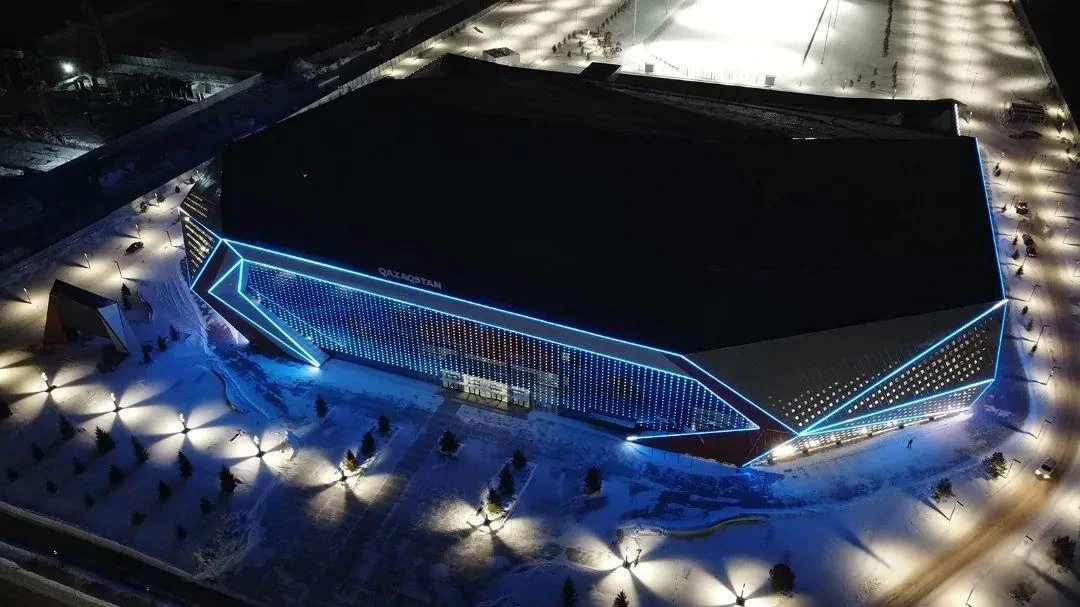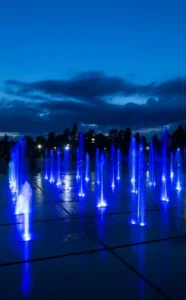- Product Knowledge
Illuminate Your Space: The Essential Guide to Facade Lighting

Facade lighting is a critical aspect of architectural and urban design, significantly enhancing the visual appeal and functionality of buildings. This deliberate illumination of a building’s exterior transforms its nighttime appearance, accentuating architectural features that might otherwise go unnoticed. In this article, we will explore the concept of facade lighting, its importance, and its contribution to urban landscapes and architectural identity.
The Art and Science Behind Facade Lighting
In bustling cities like Dubai, facade lighting is not merely about placing lights; it’s a meticulously planned design strategy that shapes public perception of a structure. By employing various lighting techniques and fixtures, facade lighting highlights architectural details, colors, and textures, while creating an inviting atmosphere. The effectiveness of facade lighting varies based on architectural style, location, and intended purpose. Here are some prevalent techniques used in facade lighting:
Uplighting Techniques
Uplighting involves positioning fixtures on the ground to direct light upward, emphasizing vertical elements and contours. This technique is particularly popular in countries like India, where it enhances the stature of buildings.
Downlighting Approaches
Conversely, downlighting casts light downwards from elevated fixtures, illuminating entrances and pathways while fostering a warm ambiance. This method is often employed by facade lighting companies in India to enhance safety and visibility.
Wall Washing Methodology
Wall washing spreads light evenly across a wall’s surface, highlighting textures and colors without creating harsh shadows. This technique is not only efficient but also contributes to cost-effective facade lighting solutions.
Backlighting Applications
Backlighting illuminates signage or specific features, creating striking silhouettes that enhance the architectural landscape. This method is often utilized for outdoor displays and features.
Spotlighting Strategies
Spotlighting focuses on particular architectural details or sculptures, delivering a dramatic visual effect that elevates facade lighting design. It draws attention to unique elements, enriching the viewer’s experience.
The Significance of Facade Lighting

1. Enhancing Aesthetic Value
One of the most apparent benefits of facade lighting is its ability to enhance a building’s aesthetic value. Effective nighttime lighting can captivate attention, evoke emotions, and leave lasting impressions. Iconic structures like the Empire State Building and Sydney Opera House illustrate how thoughtfully designed lighting transforms buildings into landmarks that resonate with both locals and tourists. Partnering with a reliable facade lighting supplier is essential for achieving such striking effects.
2. Boosting Safety and Security
Proper facade lighting is vital for safety and security. Adequate illumination deters criminal activity and instills a sense of security for those navigating around a building at night. Well-lit entrances, pathways, and parking areas increase visibility and minimize accidents, guiding visitors smoothly through dimly lit environments.
3. Showcasing Architectural Features
Facade lighting plays a crucial role in showcasing a building’s architectural elements and materials. It draws attention to distinctive features such as columns, cornices, and intricate materials, allowing architects and designers to communicate their vision and craftsmanship effectively.
4. Creating Brand Identity
In the corporate landscape, facade lighting serves as a powerful branding tool. Businesses can express their brand image and values through strategic lighting design. Customizable lighting solutions from facade lighting companies allow for dynamic displays that adapt to special events or marketing campaigns. For instance, the Burj Khalifa frequently hosts captivating light shows that not only showcase its grandeur but also promote local events and brands.
5. Enriching the Urban Experience
On a larger scale, facade lighting enhances the overall urban experience. Cities that implement effective facade lighting strategies cultivate vibrant nighttime environments that encourage social interaction, tourism, and economic activity. Well-lit public spaces create inviting atmospheres that draw foot traffic and foster community engagement.
6. Promoting Energy Efficiency and Sustainability
Advancements in lighting technology have made energy-efficient LED solutions a reality, significantly reducing energy consumption associated with facade lighting. These innovative designs can be programmed to adapt to different conditions, improving energy conservation and reducing carbon footprints. Companies like Facade Lighting Services LLC offer top-notch facade lighting solutions worldwide, ensuring sustainability alongside aesthetic appeal.
7. Supporting Cultural Narratives
Facade lighting can also play a significant role in cultural expression. Many cities utilize lighting to tell stories, celebrate heritage, or highlight local traditions. Dynamic lighting installations can reflect significant events or honor cultural diversity, beautifying urban landscapes and strengthening community identity.
As urbanization continues to rise, the role of facade lighting in architecture and urban design becomes increasingly significant. It serves as a versatile tool that enhances aesthetic appeal, promotes safety, builds brand identity, and enriches the urban experience. By leveraging modern technology and innovative design principles, architects and city planners can create visually stunning and functional urban landscapes that resonate with the communities they serve. The evolution of facade lighting will undoubtedly shape the nighttime character of our cities, enhancing both their beauty and functionality.



